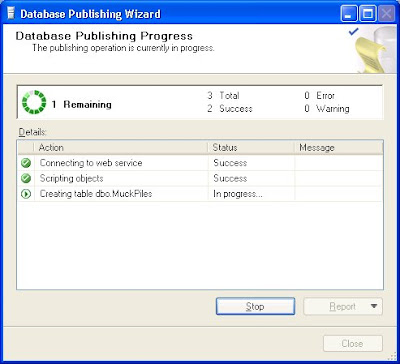Though I spend most of my life these days working with C#.net (and absolutely love it by the way!) occasionally I get a request from a long-standing client to update an old WinForms app. I built the first version in 1995 with
Visual Basic 1.0 for DOS. I so wanted to write it in VB 3.0 for Windows but they insisted that they were more comfortable with DOS apps.
So build it I did. It was so primitive that I distinctly recall having to manually construct a ListBox!
The entire project will always be memorable to me. This was my first contract after going into business for myself for the first time on January 1, 1995. Just a few weeks before I had purchased a brand spanking new Pentium 1 / 90 MHz computer. With a monitor and printer the whole thing came to about $5,000. Yes, five THOUSAND dollars, not five hundred!
To start off the project I drove from
Vancouver all the way up to Thompson, Manitoba, a distance of about 2500km.

I made this journey (and many subsequent ones like it) in my trusty 1987 VW Diesel Golf. I loved that car. On a tank of diesel fuel, which then cost about $25.00 I could drive 800km. I bought it in Ontario in 1992 with 60,000 km on it. It would last until 2001 with over 300,000 km. By then the driver's seat was
literally ready to fall through the much decayed floor! So I donated it to a high school in Victoria, BC and received a tax credit for $100. Apparently they were going to cut it in half and weld it onto the other half of another VW.

Getting back to the original story . . . I spent a few weeks up in Thompson, gathering user requirements for the Survey System application (as in
cartographic surveying) that I had been hired to build. I then drove back to Vancouver and started work on it. I got the entire thing built in about 2 months and returned to Thompson to install it, test it, tweak it, and train the users. This all went exceedingly well.
I recall that I was only charging them $35 per hour (which was even very cheap back then) for a grand total of less than $15,000. At the end of the project my sponsor, a wonderful English gentleman named Noel Laine, said to me, "I don't know how to tell you this, Rob, but you didn't charge us enough for this!" I asked him if I could retroactively raise the price. :-) He smiled and slowly shook his head.
It was a great start to my career as a consultant though and I have no regrets. And I believe my hard work and dedication laid the groundwork for a longstanding, positive relationship with this client. The fact is that in the summer of 1997 they paid me to upgrade it to work with Windows. I think I charged them $50 per hour for a total of $20,000; still cheap by today's standards! What was great, and a credit to Microsoft, was that the code for the core calculation module could be brought directly into Visual Basic 5.0, which was the standard at the time. It was very involved, intricate programming, involving a lot of math and geometry, which I hope I'll never have to write again!
Since that time, there have been periodic requirements every few years to add a feature and tweak something else. Just yesterday I received such a request. Switching my mind from the elegance and strongly typed language of C# to the much less strongly typed and error prone Visual Basic 6.0 took a few minutes but I quickly got the hang of it.
The IDE of Visual Studio .Net is so much more intelligent than the IDE of Visual Basic 6. I really missed not being immediately informed of coding mistakes I was making. To find the obvious ones, I had to compile the code into an EXE. Only then would it point out things like "If with no End If" and "Variable not declared". These are all things that a modern developer takes for granted.

When I finally got things working & tested, I uploaded a copy of the new version to an FTP server and informed my client of the same. He immediately downloaded it this morning and tested it. There was one minor tweak which I've already fixed and re-uploaded. No more driving 2,500 km or having to send a disc (or disks!) in the mail.
How the world has changed in such a short period of time. Yet it's always fun to walk down memory lane!

 At first I was loading each station's logo from its parent website. Some were quite large so I had to do a check to determine its dimensions. My first inclination was to use this method:
At first I was loading each station's logo from its parent website. Some were quite large so I had to do a check to determine its dimensions. My first inclination was to use this method:

























 A common feature of AJAX-enabled pages is to have an animated "Please Wait" image appear while the partial page update is occurring. With ASP.Net this is implemented very easily. Here's an example:
A common feature of AJAX-enabled pages is to have an animated "Please Wait" image appear while the partial page update is occurring. With ASP.Net this is implemented very easily. Here's an example:






